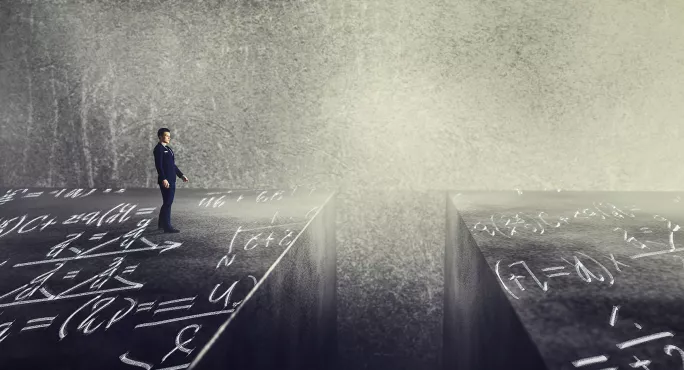Higher applications of maths - a way to tackle the attainment gap?

Scotland’s relatively new Higher applications of maths course has now entered its fourth year of delivery, with entries increasing from 870 in 2021-22 to nearly 3,000 in 2023-24 and predicted to rise further this year.
We have had incredibly positive experiences teaching the course in very different settings (a remote, rural secondary with just over 100 pupils and a secondary of around 800 pupils in an area of high deprivation). Learners have responded positively to a curriculum with immediate “real-life” and workplace relevance, integrating IT and data analysis skills alongside more “traditional” maths work.
It is notable, too, that many of these learners would not have chosen Higher maths as an alternative - for some, Higher applications of maths has been their only post-S4 engagement in a Stem subject.
Interesting patterns emerging
With three years’ data of Higher applications of maths results, interesting patterns are emerging both in take-up of the course and, even more so, in attainment. While presentations have nearly doubled year on year, there has not been uniform growth across local authorities.
The highest uptake (by percentage of overall Higher entries) was in North Ayrshire, with Moray, Falkirk, Angus and Highland not far behind.
Perhaps unsurprisingly, the three small island authorities (Orkney, Shetland and the Western Isles) are yet to present any candidates, but West Dunbartonshire is also still to start delivery, while a number of authorities - including affluent East Renfrewshire and East Dunbartonshire - presented fewer than 100 candidates apiece in 2024.
- Context: Is this how to make maths more appealing to teenagers?
- Related: Taking two maths courses dents confidence and adds workload, says SQA
- Curriculum: Maths to be first priority in CfE update
A particularly thought-provoking aspect is revealed when examining the proportion of awards by level of deprivation. While students in the least deprived 20 per cent have no statistically significant difference in proportion of passes from those entering Higher maths, those in the most deprived 20 per cent have a statistically significant difference of around 12 per cent higher proportion of passes than those entering Higher maths.
Higher maths awards typically follow the “staircase” pattern, with those having the least deprivation achieving the most awards, and those with highest deprivation achieving the fewest awards. Higher applications of maths is bucking that trend, however, with a reduced range of achievement from highest to lowest deprivation levels.
Complex web of factors
As Scottish teachers (and politicians) know only too well, a complex web of factors contributes to the poverty attainment gap and there are no simple solutions.
Discussions on the Scottish maths teachers’ Facebook forum have highlighted the shortage of Higher applications tutors (the course introduced material to the curriculum that was new to many experienced maths teachers as well as pupils), the ability to use a calculator (or computer software) for all assessment work and the course being less dependent on maths knowledge from earlier stages.
The course is also unique in Scottish maths qualifications in that 28 per cent of the course grade is based on a project, rather than everything resting on a final, “all or nothing” exam.
Eugene Geist, in a 2010 journal article, highlighted the links between poverty and maths anxiety, while Pallavi Banerjee, in a 2016 review, focused on the impact of external, environmental factors on engagement in maths at earlier school stages (particularly when combined with poor attendance). She also identifies perceived teacher expectations of poorer pupils as a factor in senior-phase attainment - all factors which Higher applications have the potential to address.
Only time will tell whether the attainment pattern is the result of a completely new qualification or something more intrinsic to the Higher applications of maths curriculum. In the meantime, the opportunity is there for schools to use this fascinating - and fun - qualification to raise attainment and close the gap.
Sara Xavier was until recently principal teacher of maths at Mallaig High School and is now a freelance data scientist, with a particular interest in using data to raise attainment. Pam Currie is a secondary maths teacher in Scotland and co-author of a 2022 book for students on Higher applications of maths
For the latest in Scottish education delivered directly to your inbox, sign up for Tes’ The Week in Scotland newsletter
You need a Tes subscription to read this article
Subscribe now to read this article and get other subscriber-only content:
- Unlimited access to all Tes magazine content
- Exclusive subscriber-only stories
- Award-winning email newsletters
Already a subscriber? Log in
You need a subscription to read this article
Subscribe now to read this article and get other subscriber-only content, including:
- Unlimited access to all Tes magazine content
- Exclusive subscriber-only stories
- Award-winning email newsletters
topics in this article



